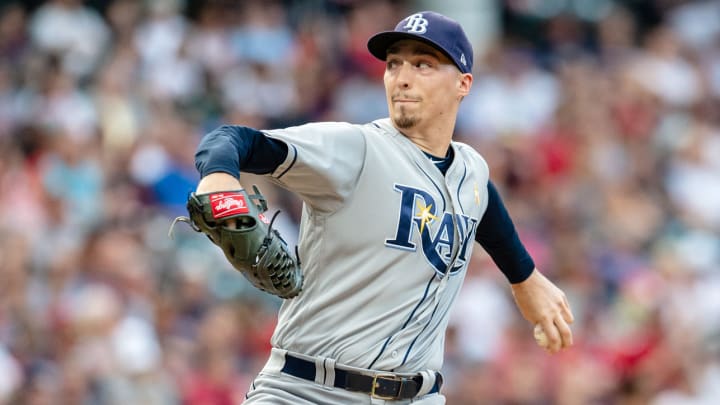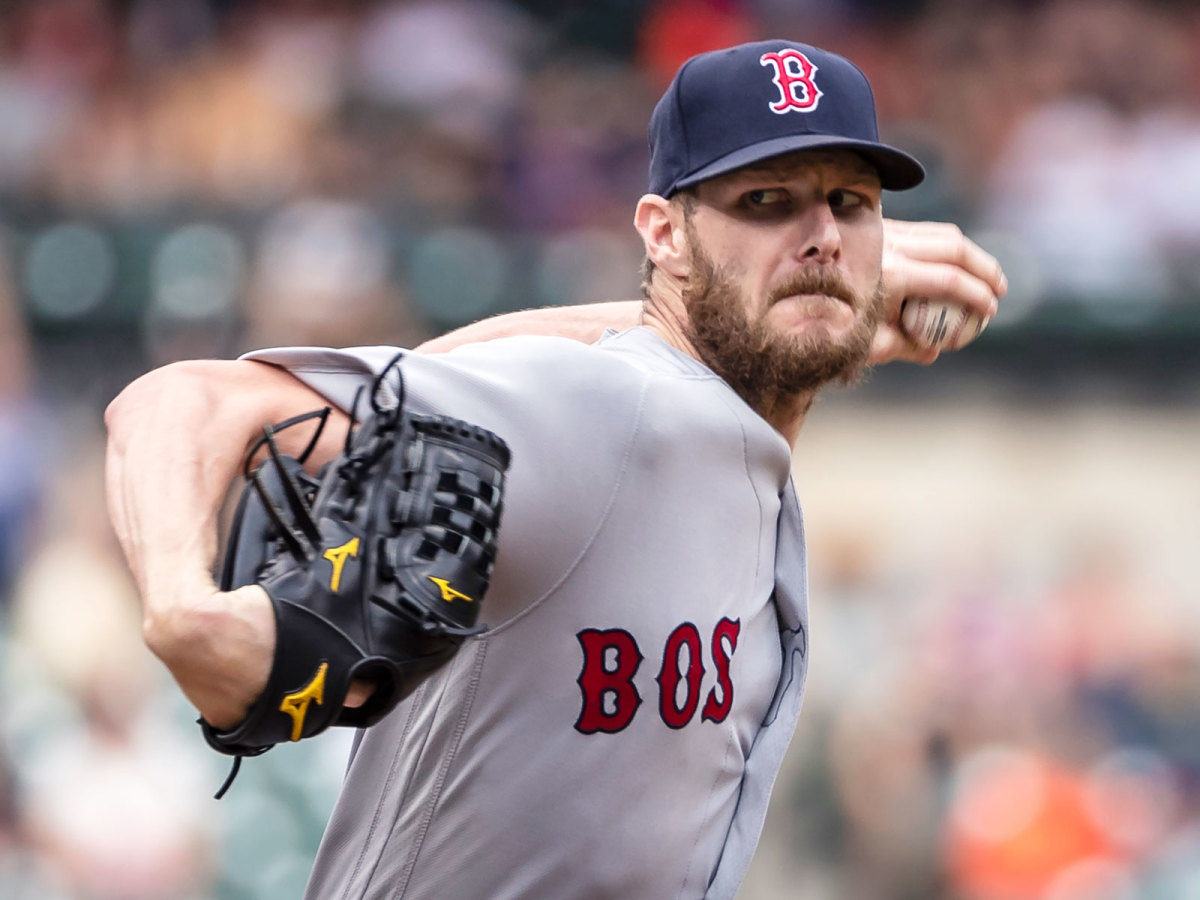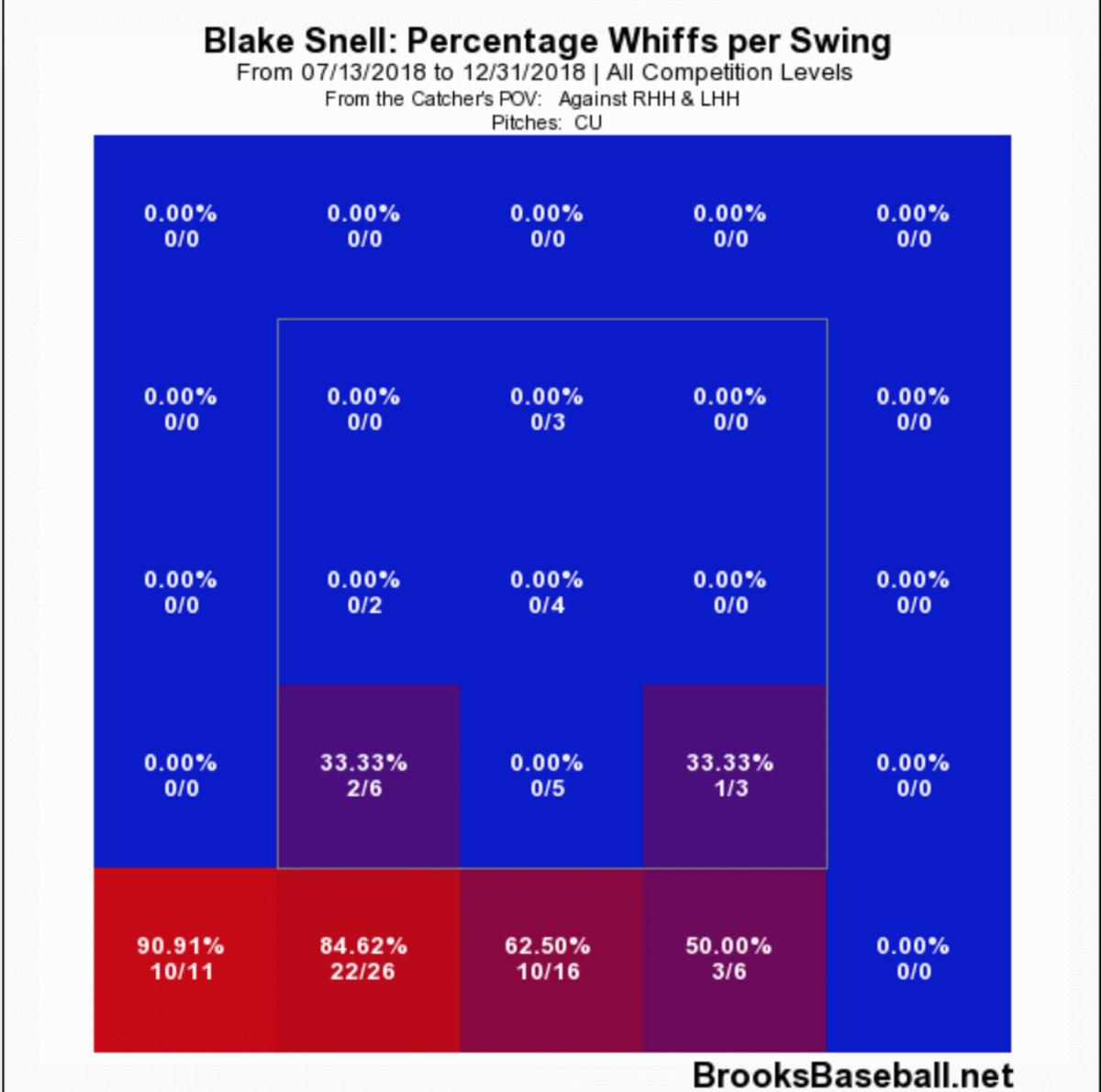Chris Sale and Blake Snell Are Compiling an AL Cy Young Race for the Ages

All MVP arguments, in some way and at some point, are about value. That is, quite literally, the name of the exercise. Many Cy Young arguments feel fundamentally similar, but there’s a crucial distinction to be made: Value is not in the name, or on the award, or anywhere else here. The Cy Young is given to each league’s most outstanding pitcher, not the most valuable. There isn’t much of a functional difference between “outstanding” and “valuable”; baseball certainly doesn’t emphasize it, and maybe it shouldn’t. Maybe it’s just semantics. But it’s also useful context, no matter how pedantic, and a handy framework for the 2018 AL Cy Young race.
The National League’s corresponding vote has become a referendum on how much a pitcher’s win-loss record is worth—not a new battle, certainly, but one that has rarely been fought with such force as it has been this year by the New York Mets’ Jacob deGrom. The American League’s vote has the potential to force a similar debate, albeit less dramatically. But this one’s not about pitcher wins. It’s about pitcher workload.

Over the past two decades entering this season, there were just seven performances by a starting pitcher with a sub-2.00 ERA. In 2018, there are three. One is deGrom, who now sits at 1.78, the lowest figure posted since Pedro Martinez’s 1.74 in 2000. The American League can lay claim to the other two: Boston’s Chris Sale, at 1.92, and Tampa Bay’s Blake Snell, at 1.97.
Beyond his best-in-class ERA, Sale leads the league in many of the other key metrics here: ERA+, WAR, FIP, WHIP, K/9. He’s giving the best performance by a starter since Roger Clemens, according to ERA+, which takes earned run average and adjusts for factors such as ballpark environment and quality of opponents before measuring a pitcher against the league average, which is always set at 100. Sale’s 224 means that he’s been twice as good as the average pitcher, and then some. His 38.3% strikeout percentage is the highest ever for a starting pitcher. (1999 Pedro finished at 37.5%, and 2001 Randy Johnson at 37.4%.) Over the last six years, Sale has finished second, third, fourth, fifth (twice) and sixth in voting for the Cy Young. This year, it would seem, is finally his chance to go for first.
Or, at least, it could be—if voters decide that his performance has been remarkable enough to outweigh the fact that he’ll have barely pitched over the last two months of the season, with two trips to the disabled list for a shoulder injury. He’s expected to start this weekend against Cleveland, which could open him up to another start next week. But even if all goes well and he gets two full starts, there’s a very real chance that he won’t have pitched enough to qualify for end-of-season statistical titles. With 150 innings pitched so far, he could come up just short. (The qualifying mark is 162, one inning per game.)
Even in a vacuum, without any other compelling candidates, that workload would make Sale’s candidacy a tough sell. There’s no precedent for giving the award to a starter with so few innings pitched. As starters have thrown fewer and fewer innings with each recent passing year, it’s still been almost unthinkable for a pitcher to win without crossing the threshold of 200 IP. There’s just one exception: 2014 Clayton Kershaw, with 198.1 innings. (He won unanimously, after leading baseball in just about everything.) No other starting pitcher has ever won the award without 200 IP, strike-shortened seasons excepted. Sale’s performance itself, of course, is somewhat without precedent. Remember: The highest strikeout rate ever! But is it so without precedent as to set a new precedent here? Again, even if there were no other strong candidates, that question would be weighed pretty heavily. But there are other strong candidates—including an exceptionally and surprisingly strong one, in 25-year-old Snell.

The Rays have not really had a rotation this season, at least not in the conventional sense. They’ve pushed bullpen experimentation to the extreme, discarding starters for openers. Beyond their radical strategizing, Chris Archer was traded; Nathan Eovaldi has been hurt. Snell has been the only constant among the team’s starting pitching, and he’s been one of the best examples that they could have ever asked for. He became the first pitcher to 20 wins with yesterday’s victory over Texas, and he is, again, one of just ten pitchers in the last two decades with an ERA below 2.00.
That Snell is here, arguably the most successful starting pitcher in the league, both is and is not surprising. His ceiling has always been high; as the organization’s top pitching prospect, the lefty stood out with a vicious change-up and a big curve. But the likelihood that he’d ever reach that ceiling never seemed particularly great. While Snell had always had the stuff, he’d been plagued by command issues throughout his career in organized ball. In 2016, his rookie season, he walked more than five batters per nine innings. He improved in that regard last year, but not by too much, and his overall performance slipped as he failed to get batters to whiff on his curveball. After a particularly rough stretch, he was briefly sent back to Triple-A. He entered this season under the burden of unfulfilled promise, after two years of flashing his big-league ability in maddeningly brief spurts.
He began this season better than he’d ever been. In the first half, he posted a 2.27 ERA and 1.07 WHIP. But his walk problems lingered, with 3.55 BB/9, and other peripheral figures suggested that he hadn’t been quite as good as his earned run average indicated. His second half seemed like he might be bound to regress, if anything. But Snell did the opposite: He got much, much, much better. In 50 innings in the second half, he’s allowed just eight runs. He’s walked only eleven batters, and he’s struck out 66. That shakes out to a 1.26 ERA and 0.74 WHIP for the second half. How has he done this? He’s depended less on his fastball—never his strongest pitch, but still his primary one—and more on his curve and his change-up. The curve, in particular, has been almost unhittable. Just 5% of batters have put it in play in the second half, compared to the first half’s (already quite good!) 11%. It’s his out pitch, and it’s done its job. Here’s what a strike zone plot of his curve has looked like in the second half, showing the number of whiffs per swing:

Snell, essentially, was beating expectations in the first half. He’s been destroying them in the second. Like Sale, though, he has made a trip to the disabled list this year due to a shoulder issue. With 169 IP, he doesn’t face any question of qualifying for statistical title, yet he, too, would set a new standard for a starting pitcher’s workload if he wins the Cy Young. Even if he gets two deep starts in the season’s final two weeks, he still won’t come reach Kershaw’s 2014 record of fewest innings pitched for a Cy Young.
Sale has been dazzlingly, historically sharp. Snell has come close to matching him with a brilliant second half. Perhaps Snell has been more valuable, stretched over the course of the season. But Sale, then, has almost unquestionably been a bit more outstanding—a slightly brighter burn, in a shorter burst. Here’s how they stack up, with full-season numbers across the board:
| ERA | ERA+ | FIP | K% | BB% | WHIP | fWAR | bWAR | W-L | IP |
|---|---|---|---|---|---|---|---|---|---|---|
Sale | 1.92 | 224 | 1.96 | 38.3% | 5.7% | 0.84 | 6.2 | 6.7 | 12–4 | 150 |
Snell | 1.97 | 207 | 3.06 | 30.6% | 8.9% | 0.97 | 4.0 | 6.6 | 20–5 | 169 |
Must baseball’s ideas of value and outstanding change, as pitcher workloads lighten and injury rates spike? The game might not have a choice. Either pitcher would represent a new frontier for what a seasonal workload need be for a Cy Young; Sale would just shift the paradigm more aggressively. But either pitcher might not be the choice, perhaps for the very reason of that paradigm shift. A more conventional choice exists in Houston’s Justin Verlander, whose stupendous work from the first half has diminished but certainly not disappeared. With 202 IP and a 2.67 ERA, he offers strikeout and walk rates that are just behind Sale and ahead of Snell. Cleveland’s Corey Kluber, too, stands on the fringes of the conversation, with 203 IP and a 2.93 ERA; so do Gerrit Cole (187 IP, 2.88 ERA) and Trevor Bauer (166 IP, 2.22 ERA), albeit each tangled in the same workload questions as Sale and Snell.
More than any other pitcher this year, Sale has stood out. His candidacy depends on how much voters will value that.
